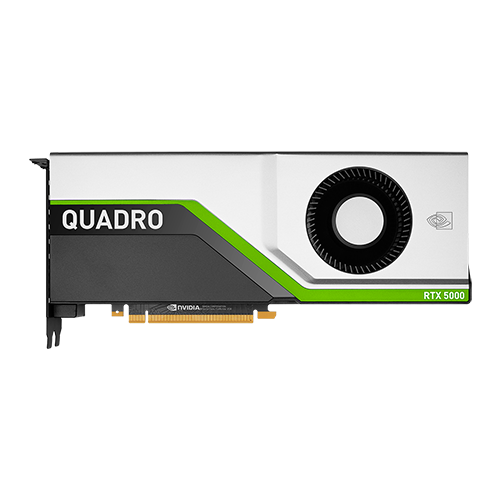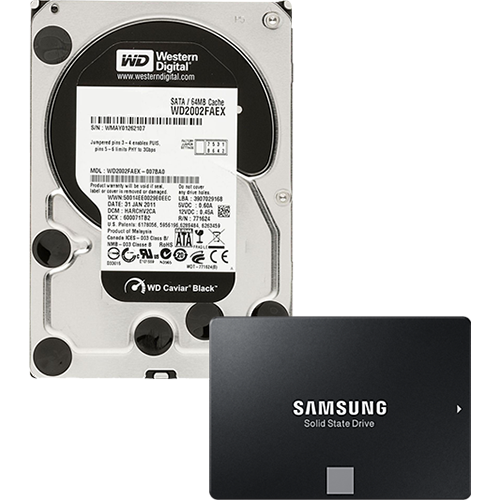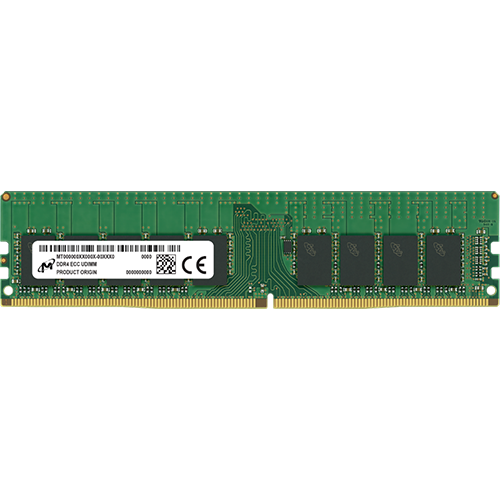
Solidworks
SolidWorks is a solid modeling computer-aided design (CAD) and computer-aided engineering (CAE) computer program.
Hardware Recommendations
 Processor
Processor
Selecting the number of processing cores and frequency in your workstation is critical. Design within the Solidworks software are single-threaded (frequency bound) tasks, meaning they rely primarily on a single processor core. Thus, a CPU with less cores, but high operating frequency (clock speed) will offer the best overall performance.
Since Windows operating system also utilizes a couple cores, we recommend a 4 core processor. If you will be multi-tasking with a variety of applications, go with a 6- or 8-core processor. Simulation and rendering outside of Solidworks utilize multiple cores simultaneously. Therefore, if you incorporate these applications into your Solidworks workflow, we recommend a 8- to 16-core processor to complete your renderings or simulations faster.
Processors have base and turbo clock speeds. An example is a CPU model with 6 processing cores with a 3.8GHz base frequency and a 4.6GHz turbo frequency. If the system tasks are utilizing all 6 cores, the CPU will function at 3.8GHz. If the system is utilizing 1 core, the CPU will function at the 4.6GHz turbo. The CPU will function between 3.8GHz and 4.6GHz depending on the number of processing cores utilized. We recommend a 4GHz+ turbo frequency.
Intel offers the Core i7/i9 processors as the consumer series and the Xeon processors as the professional series. In the past, Xeon CPUs were more powerful than their Core-series counterparts. Today, however, there is little functional difference between the two Intel product families for workstations. Core-series processors, especially with the 'K' designation (e.g. the Core i7-10700K) have the highest clock speeds, while the Xeon models maximize the number of cores. Since the clock speed impacts Solidworks performance, a Core series CPU is perfectly fine. You can opt for a Xeon if you prefer to stick with enterprise-class components developed for 24/7 operation and intensive workloads.
 Graphics
Graphics
NVIDIA offers the GeForce series graphics cards for consumers and the Quadro series graphics cards for professionals. For many CAD applications including AutoCAD and Revit, there is no advanage of going the the professional NVIDIA Quadro series, except for getting support from the CAD application vendor. The NVIDIA GeForce series offers a better bang for the buck. However, Solidworks is the only application that takes advantage of the different drivers for the NVIDIA Quadro series to enable some features. For example, Solidworks has a feature called RealView, which is only supported on the Quadro. We recommend the NVIDIA Quadro series.
For Solidworks, selecting a significantly more powerful graphics card will not result in a dramatic performance increase. We recommend the NVIDIA Quadro RTX A4000 as an ideal mid-range graphics card for most SOLIDWORKS design workflows. We recommend the NVIDIA Quadro RTX 4000 Ada for faster rebuilds and and overall improved interactivity with large assemblies.
Dassault certified NVIDIA Quadro series
NVIDIA Quadro RTX 5000 Ada or A6000 (massive assemblies)
NVIDIA Quadro RTX 4000 Ada or A5000 (extremely complex assemblies)
NVIDIA Quadro RTX 4000 Ada or A4000 (complex assemblies; most popular)
NVIDIA Quadro RTX A4000 or A2000 (moderate assemblies)
 Storage
Storage
We recommend a NVMe SSD for the operating system, applications and project files. 1TB is the most common capacity for Solidworks workstations. A 500GB is fine if your projects are moderately sized and the workstation is utilized for basic function work purposes. A 2TB is recommended if your projects are large and you will you will use the workstation for a variety of professional applications.
If your projects are complex, are running multiple applications as the same time, and you want to maximize performance, we recommend two SSDs:
- Primary NVMe SSD: operating system and applications
- Secondary NVMe SSD: dedicated to active projects
For storage or backup, we recommend a SATA SSD or Hard Drive.
M.2 NVMe Gen4 SSD performs at ~5,000MB/s
2.5-inch SATA SSD performs at ~500MB/s
3.5-inch SATA Hard Drive performs at ~250MB/s
 Memory
Memory
The amount of RAM needed depends on how complex your assemblies are and how many projects you have opened at the same time. More RAM can improve performance opening and saving files, rebuilding assemblies, and rotating models. However, massive amounts of RAM doesn't always scale.
For simple parts, small assemblies (200 or fewer components), and drawings, we recommend 32GB RAM.
For complex parts with advanced shapes and assemblies containing 200-1000 components and drawings, we recommend 64GB RAM.
For very complex parts and assemblies containing 1000 – 200,000 components, we recommend 128GB RAM.
Configuration Recommendations
HP Z2 G9 Tower Workstation
$3,900
HP Z2 G9 Tower Workstation
$5,250
HP Z4 G5 Workstation
$6,250
HP Z6 G5 A Workstation
$7,700
HP Z6 G5 Workstation
$11,400
HP Z6 G5 A Workstation
$12,900
Hardware Reference Recommendations
- Feb 2024 by
Superworkstations.com
How to Configure Your Solidworks workstation - Pamphlet - Jan 2024 by
Javelin Tech
SOLIDWORKS 2024 Hardware Recommendations - Feb 2023 by
CG Director
Best Workstation PC / Laptop for CAD, Autocad, Solidworks, Revit, Inventor - by
Solidworks
SOLIDWORKS and SW Data Management System Requirements
Running additional applications on this system?
The recommended components and configurations provided on this page are specific to this software. If you plan on running other applications, view our recommendations for them as well and choose a configuration that best suits the needs of the application requirements collectively. Feel free to contact us for further assistance.
 3ds Max
3ds Max  Act-3D
Act-3D  After Effects
After Effects  AMBER MD
AMBER MD  ANSYS
ANSYS  ARCHICAD
ARCHICAD  Arnold
Arnold  Audition
Audition  AutoCAD
AutoCAD  Blender
Blender  BodyPaint 3D
BodyPaint 3D  Catia
Catia  Cinema 4D
Cinema 4D  Corona Renderer
Corona Renderer  DaVinci Resolve
DaVinci Resolve  Digital Performer
Digital Performer  DIGITS
DIGITS  Flame
Flame  Fusion
Fusion  Harmony
Harmony  Hauptwerk
Hauptwerk  Houdini FX
Houdini FX  Illustrator
Illustrator  InDesign
InDesign  Inventor
Inventor  Keyshot
Keyshot  Lightroom
Lightroom  Live
Live  Mari
Mari  Maxwell
Maxwell  Maya
Maya  Media Composer
Media Composer  Modo
Modo  MotionBuilder
MotionBuilder  Mudbox
Mudbox  Navisworks
Navisworks  Nuke
Nuke  OctaneRender
OctaneRender  Photoshop
Photoshop  Premiere Pro
Premiere Pro  Pro Tools
Pro Tools  ReCap 360
ReCap 360  RenderMan
RenderMan  Revit
Revit  SketchUp
SketchUp  Solid Edge
Solid Edge  Solidworks
Solidworks  TensorFlow
TensorFlow  Unreal Engine
Unreal Engine  V-Ray Next
V-Ray Next  VMware
VMware  ZBrush
ZBrush  OctaneRender
OctaneRender  RenderMan
RenderMan  V-Ray Next
V-Ray Next  Unreal Engine
Unreal Engine